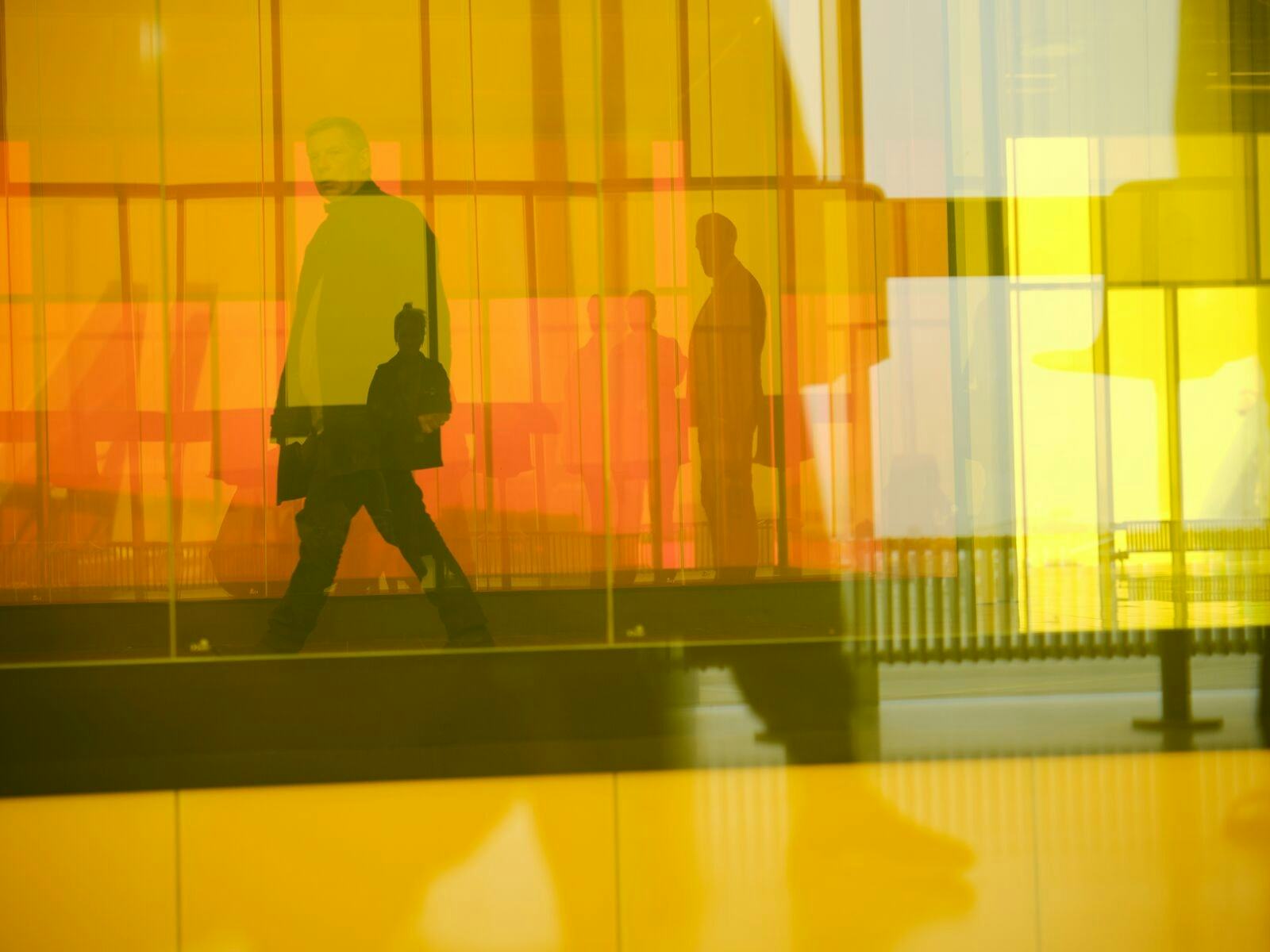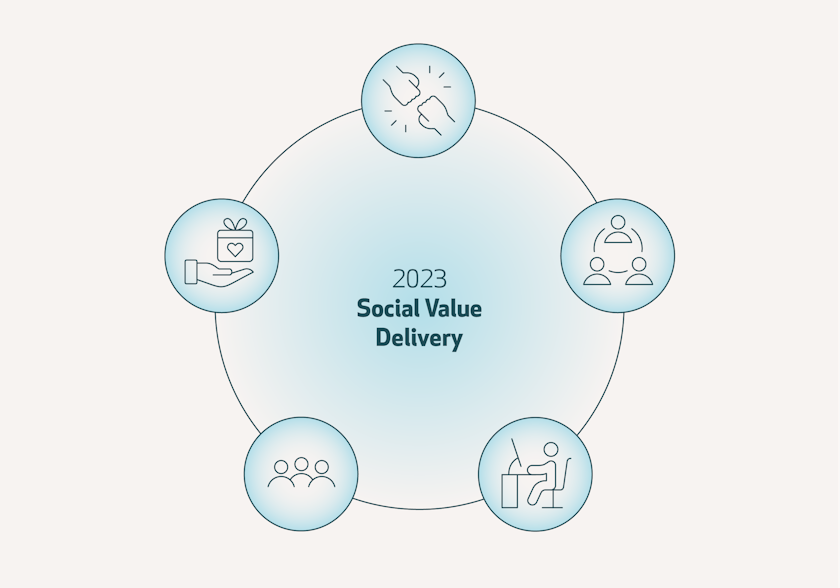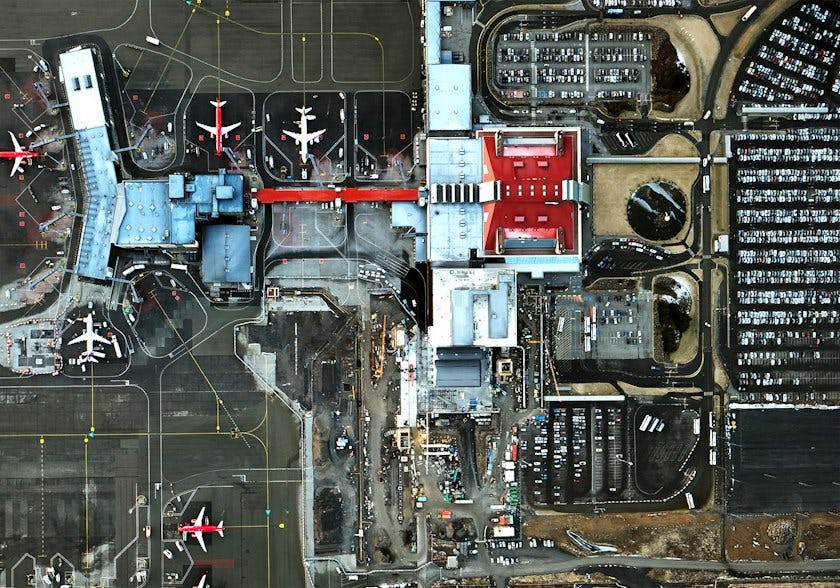
With large-scale projects comes great responsibility
Sustainable and responsible construction is at the heart of the Keflavik Airport development plan. With these priorities, the airport will be more competitive and better prepared for taking on what is to come. Furthermore, this approach encourages long-term efficiency, reduces the environmental impact of the constructions, and increases value for the community.
The development of Keflavík Airport is a major project that affects the environment, society, and the economy - we take that responsibility seriously. With sustainability as a guiding principle, Isavia works purposefully to minimize environmental impact and create value for and with society while ensuring increased efficiency in operations. This is how Keflavík Airport will be better prepared for the future.
All work of KEF+ follows a specific framework in order to ensure that sustainability is an integral part of all stages. This framework sets out measurable goals and ways to reach them and defines the parties responsible for each goal.
The aim is to decrease the construction project’s carbon footprint, reduce water and electricity use, and maintain green areas and biodiversity in both design and execution. Likewise, emphasis is placed on creating healthy spaces for passengers and airport staff. Underway is also systemic work with the local community, through exchange of knowledge and experience. Emphasis is placed on having active dialogue and empowering individuals for employment, increase skills and development.
The airport development project will be certified by BREEAM, the leading method of assessing, rating, and certifying the sustainability of buildings. The aim is to earn the rating of Excellent, which is an ambitious goal for an airport. BREEAM provides independent certification of construction projects that ensures vital control and guarantees that all construction is truly sustainable.
How do we work towards sustainability
Carbon-neutral construction
By using environmentally friendly building materials, minimal energy usage, and technological solutions, the goal is to reduce the carbon footprint by 150,000 tonnes, which is equivalent to 930.000 flights between Keflavik Airport and London.
Biodiversity
The nature-oriented design will minimize the impact of construction on vegetation and nature in the vicinity of the airport. Carbon offsetting will also be used to increase biodiversity elsewhere.
Vocational Development
Work with the local community and the airport community to create opportunities for staff to increase their skills by creating a good environment for job-related learning and career development. Emphasis is placed on activating individuals from the local community for employment.
Sustainable transportation
Throughout all development of buildings and other airport infrastructures, the goal is to promote energy transition in transportation, both inside and outside airport premises.
Sustainability Framework
At Isavia, we have a clear policy that sustainability should be a guiding principle in everything we do, and this is elaborated on in our sustainability policy that emphasizes responsibility towards local communities, being a trusted partner while building economic prosperity, and collaborating on environmental issues. To reach sustainability goals in daily operations a five-year action plan has been set with clear objectives and criteria. When it comes to the airport development project a specific sustainability framework has been set in addition, including measurable goals, ways to reach them, and defines the parties responsible for each one.
This sustainability framework has eight primary goals relating to sustainability, with five focusing on the environment and three on social value. To reach each goal, a detailed and transparent road map is included that addresses elements related to design, construction, and operations.
Goals of the Sustainability Framework
Carbon Reduction
- Work towards net zero by reducing embodied carbon, and operational energy while employing low-carbon technologies.
Responsible Consumption and Circular Economy
- Reduce waste and water waste, select responsible materials, and design buildings for the future with adaptability and the circular economy in mind.
Enhanced Biodiversity
- Through a nature-centric design, the influence of buildings on the surrounding vegetation and natural environment near the airport will be kept to a minimum. Additionally, carbon offset measures will be implemented to enhance biodiversity in other areas.
Healthy Buildings and Workforce
- Through design, organization, and choice of materials, we aim to create healthy spaces that promote the productivity and well-being of both passengers and airport staff.
Sustainable Transport
- Deliver buildings that support the decarbonization of transport, whether is regard to airplanes or vehicles used on or around the airport.
Good Neighbour
- Isavia demonstrates a proactive approach to advancing sustainability, not only within its own operations but also throughout the entire airport and local community. The focus is on fostering a collaborative environment for the mutual exchange of information, knowledge, and experiences. Through this cooperation, success is collectively achieved for the benefit of the broader society
Future Talent
- Increase the number of reliable local jobs by supporting individual career development and offering training opportunities and vocational placements.
Enable Business
- Create a culture of learning within the supply chain and address barriers to engagement with new businesses to create opportunities for upskilling the workforce.
- Download
View Isavia‘s Sustainability Policy

